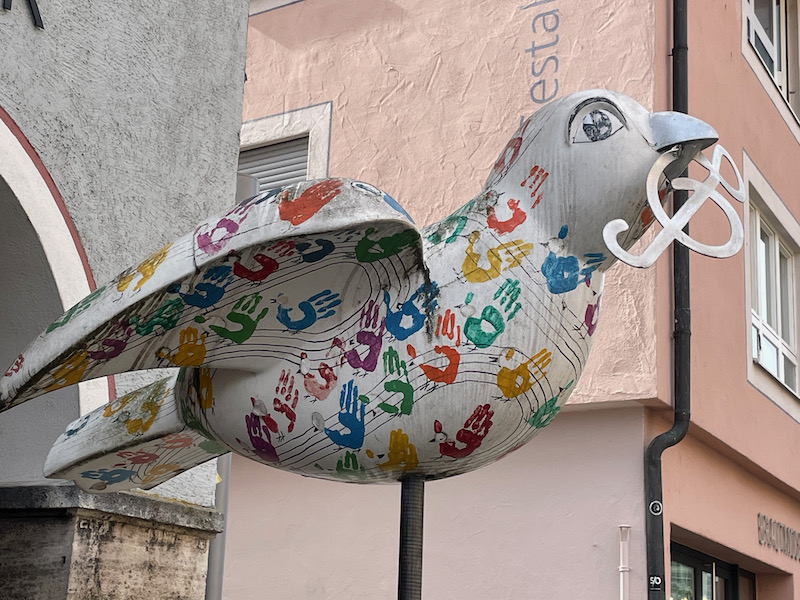Our Blog - Germany 2023 - Ulm, Germany
Ulm is a city that has existed since the Middle Ages, founded around 850, and it was declared an Imperial City or "Reichsstadt" by Friedrich Barbarossa in 1181. Several other notable historical things that occurred here. During the campaign of 1805, Napoleon managed to trap the invading Austrian army of General Mack and forced it to surrender in the Battle of Ulm. From 1933 to 1935, a concentration camp primarily for political opponents of the regime was established on the Kuhberg, one of the hills surrounding Ulm. The Jews of Ulm, around 500 people, were first discriminated against and later persecuted; their synagogue was torn down during Kristallnacht in November 1938. In 1944, about 80% of the medieval city center was destroyed by a strategic bombing pass by the RAF. Some parts of the city were rebuilt in the plain and simple style of the 1950s and 1960s, thankfully most parts of the historic old town were restored. The city is primarily known for having the church with the tallest steeple in the world (161.53 m or 529.95 ft), the Gothic Ulm Münster, and as the birthplace of Albert Einstein.
The most visited site in town is the Ulm Münster, which is currently the tallest church in the world and the 5th-tallest structure built before the 20th century, with a steeple measuring 161.53 meters. Some people call it the Ulm Cathedral due to the size, but it has never been the seat of a bishop, which is what defines a church as a "cathedral". The first stone was laid in 1377 and work continued until about 1543, when work was suspended due to political, religious, and economic factors. Most of the church was already completed, and between 1844 and 1890, flying buttresses were added as well as the completion of the steeples. A devastating air raid hit Ulm in December 1944, which destroyed virtually the entire town west of the church to the railway station and north of the church to the outskirts. The church itself was barely damaged even though almost all the other buildings of the Münsterplatz were severely hit and some 80% of the medieval city center was destroyed.
Like normal, we will start on the outside. Here you can see the front with the tall spire (along with the scaffolding). While the towers and all decorative elements are of stone masonry, most of the walls are brick, like you can see in the 2nd and 3rd pictures.
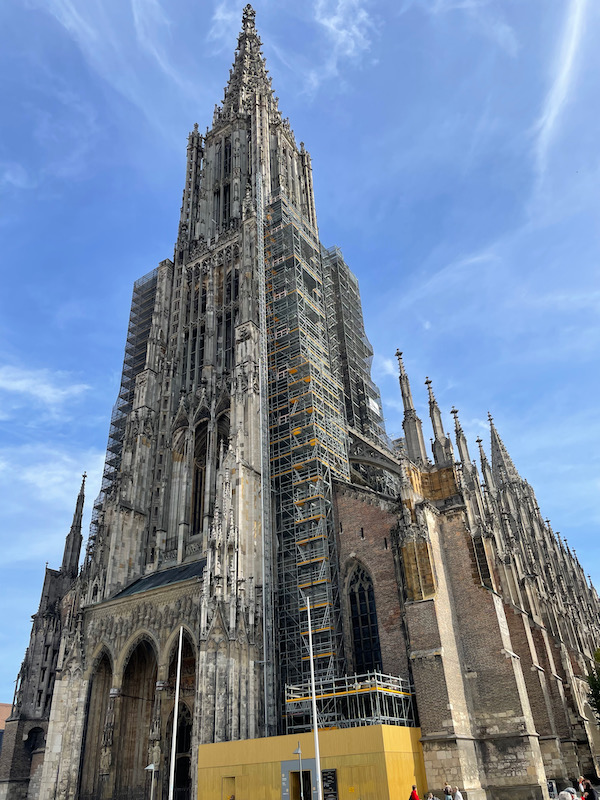
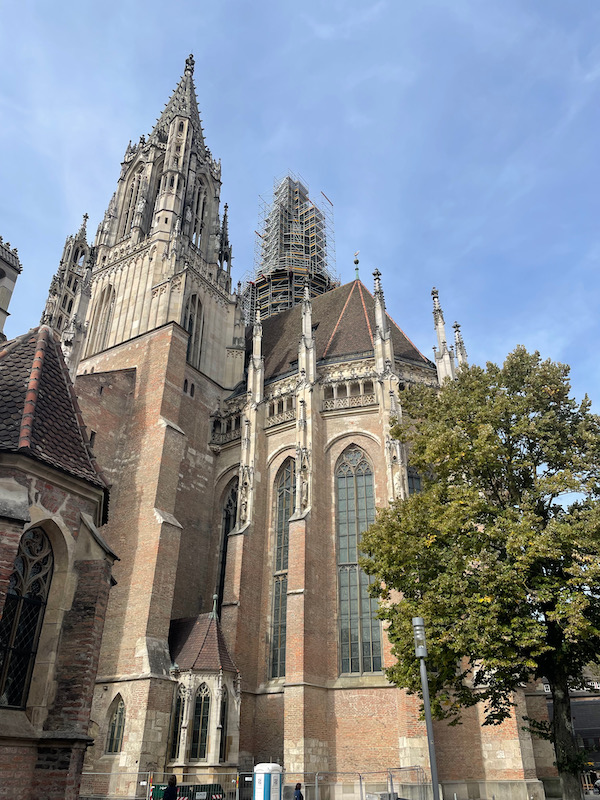
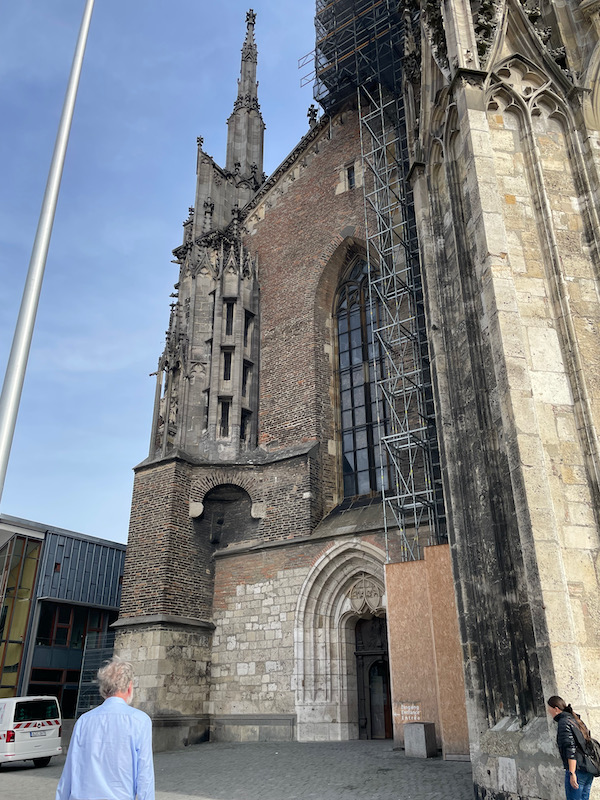
On the southeast portal, the bridal or court portal, you can see the depiction of the Last Judgment. It is thought that this was created in 1360 and came from the old parish church (which was built outside of the city walls).
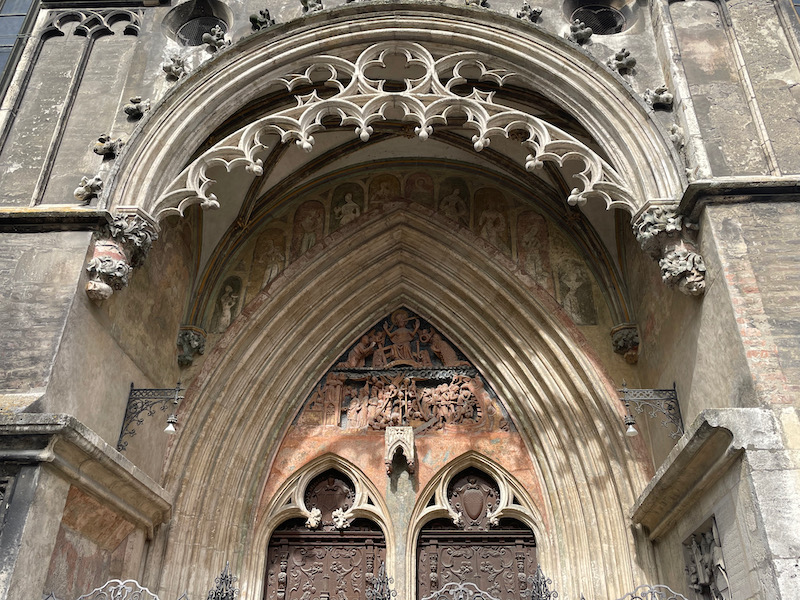
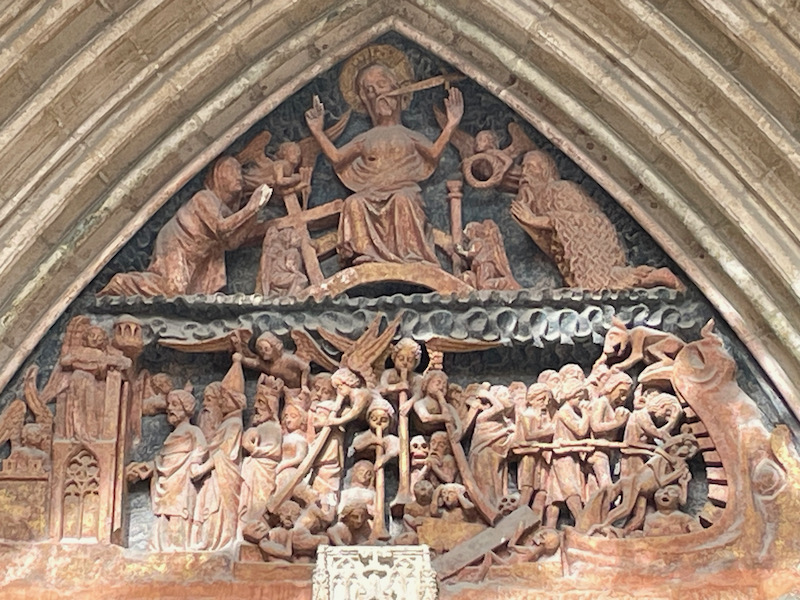
Here you can see the main portal with 3 Gothic arches, opening onto a vestibule lined with statues including the "Man of Sorrows" by Hans Multscher (last picture).
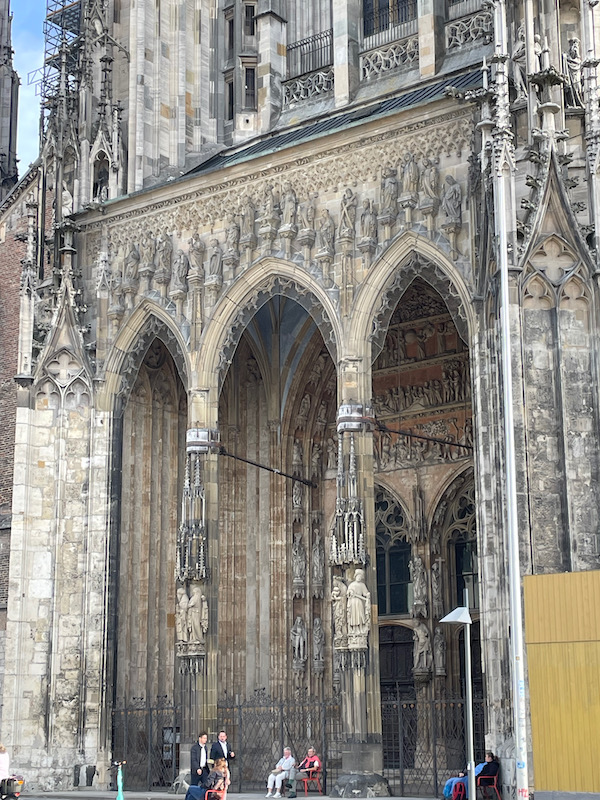
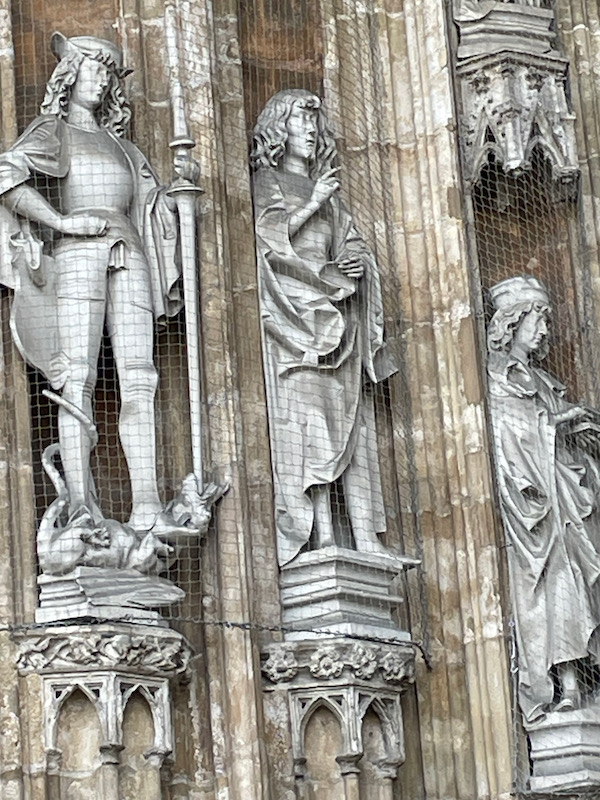
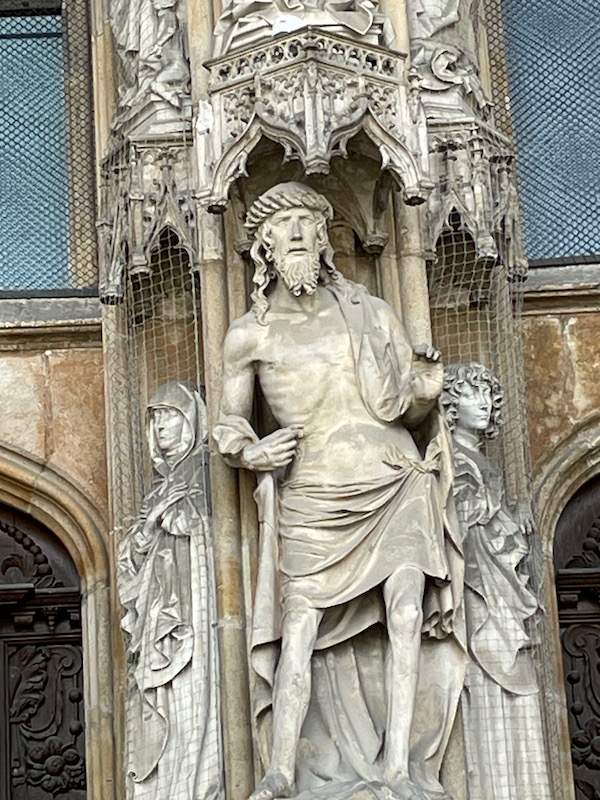
The tympanum above the entry doors depicts the creation from the book of Genesis.
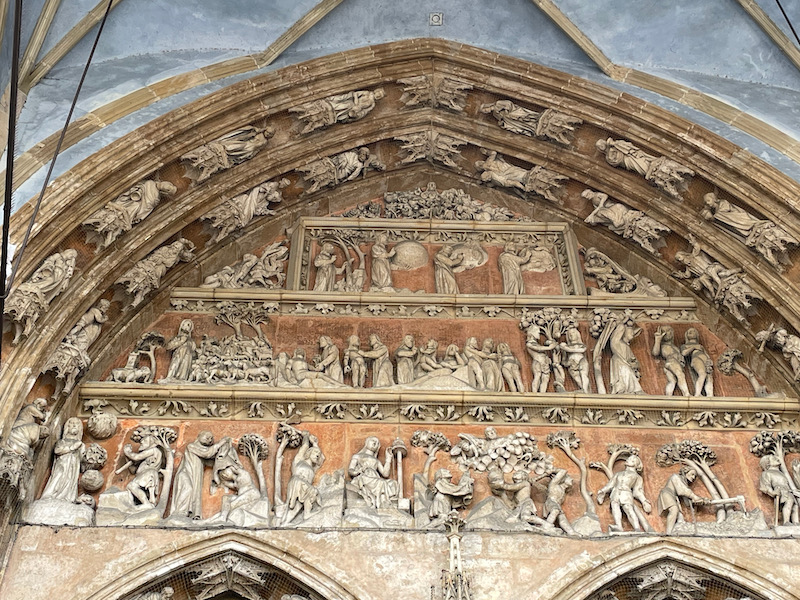
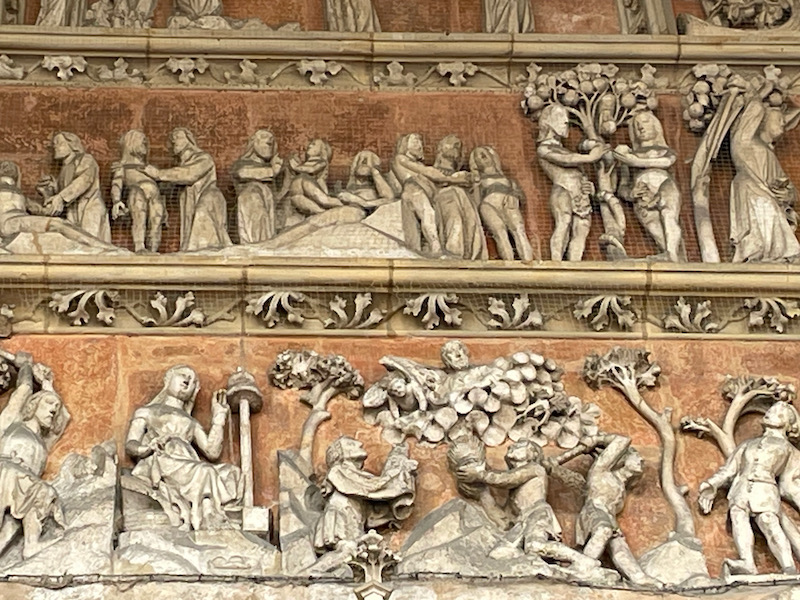
It is difficult to get a good view of the whole church, with it being as big as it is, but this model will give you an idea of the whole thing.
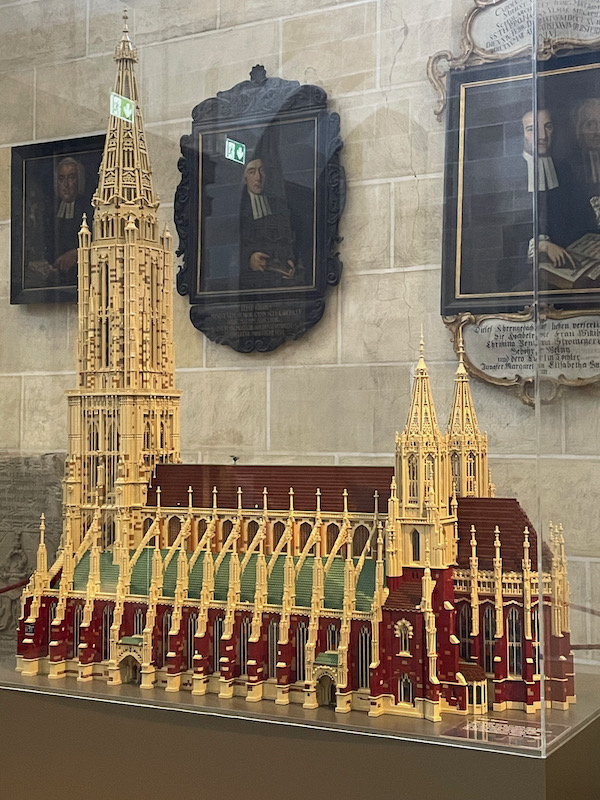
Looking down the nave, you can see the tall Gothic arches on either side and the painted ceiling between the ribs. There is a shorter Gothic arch directly in front, leading to the choir (which has a lower ceiling). On the wall above that arch is a fresco of the "Last Judgment", dating back to 1471. At the top, there is Christ in the mandorla (the almond-shaped glory) with Mary (left) and John the Baptist (right) kneeling in front of him. To the right of John the Baptist sits the apostles Andrew (with the cross), John (with the chalice), and Paul (with the sword). To the left of Mary is Peter (with the key). There is also a circle of 7 holy virgins and groups of popes, bishops and monks.
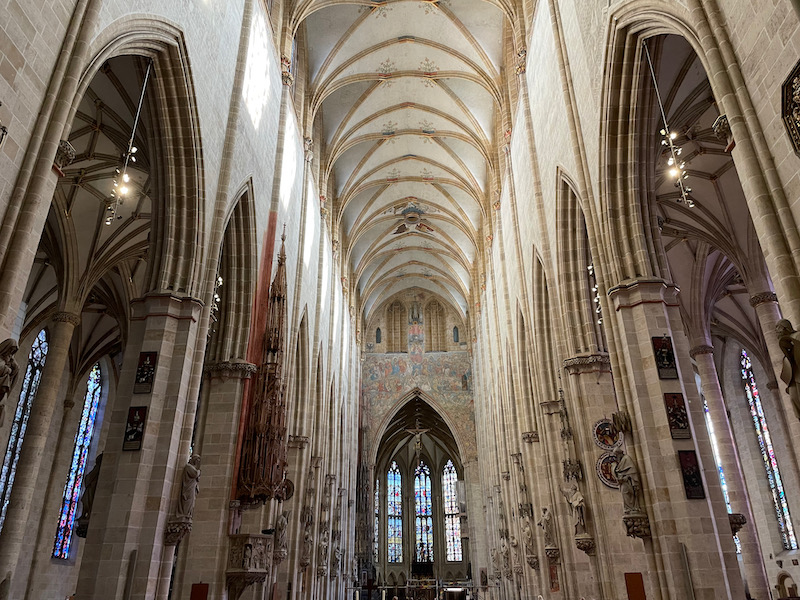
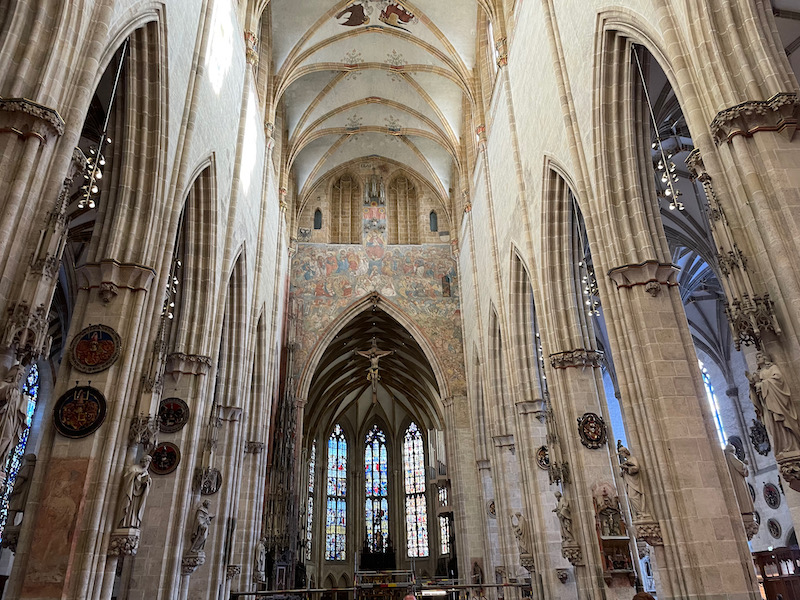
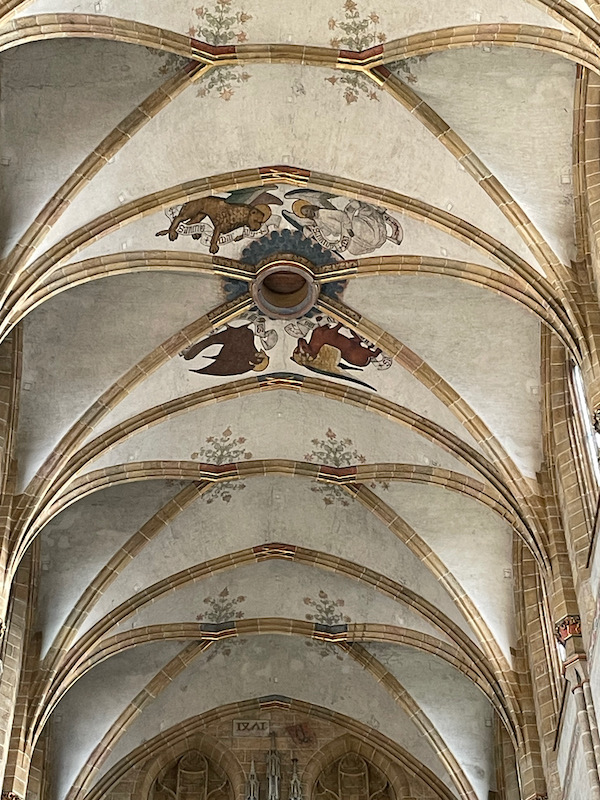
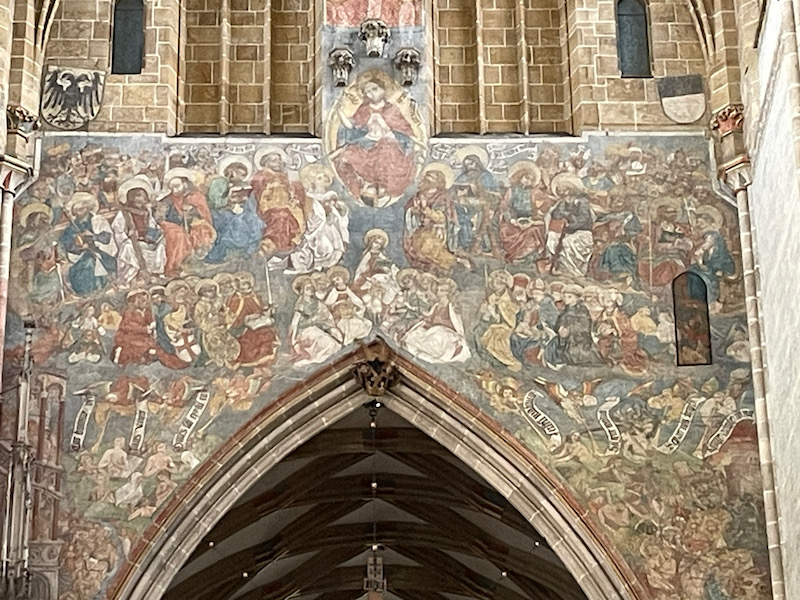
A couple stained-glass windows. Throughout the church, the windows have various styles and date from various timeframes. This first one, older and more traditional, and the 2nd one, more modern.
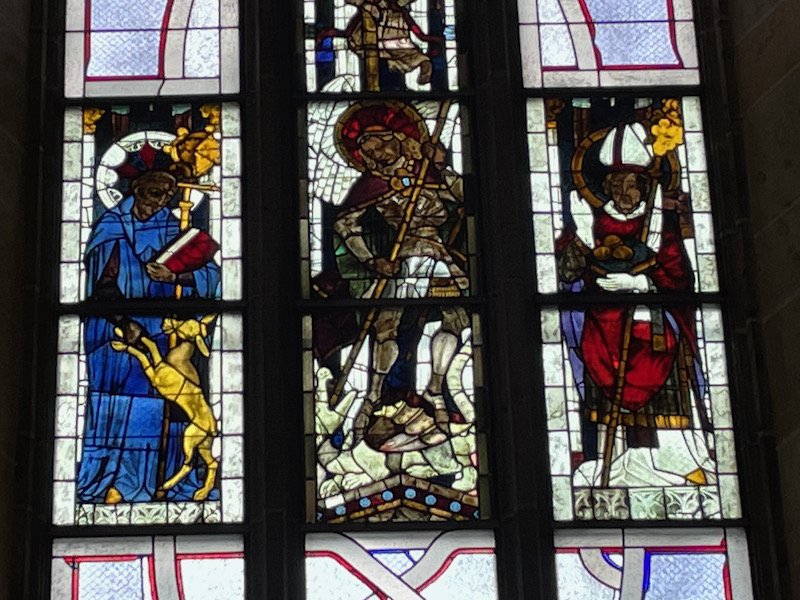
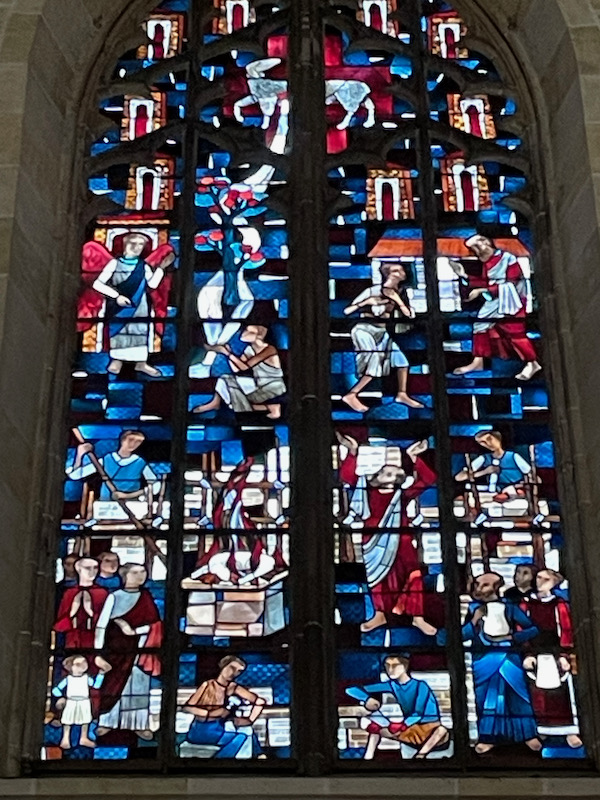
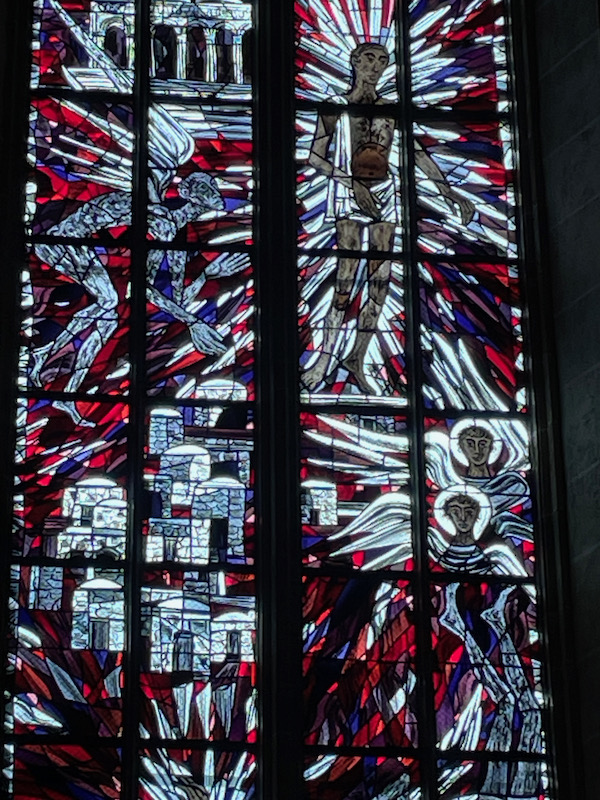
In the picture above of the nave, you can see that there are lots of round things on the columns, and they are also on the walls. In fact, there are 133 coats of arms or death shields in the church, the largest collection of coats of arms in Germany.
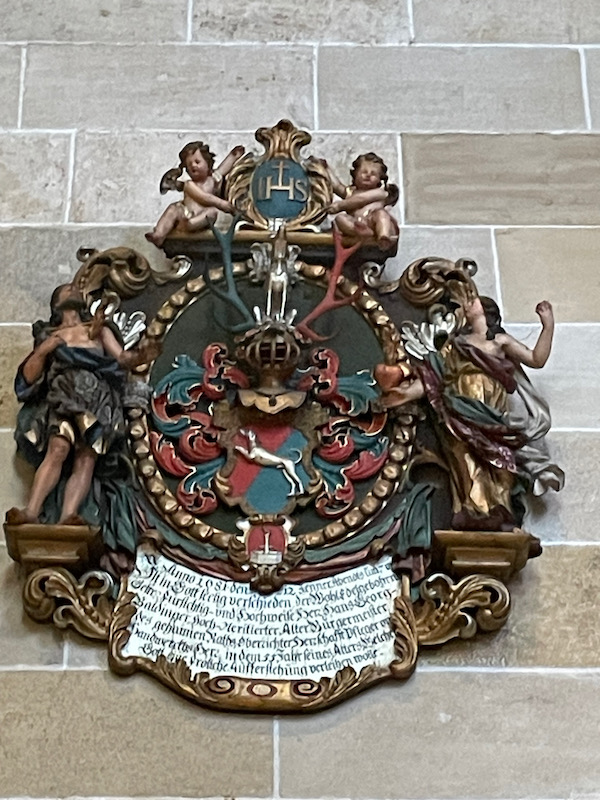
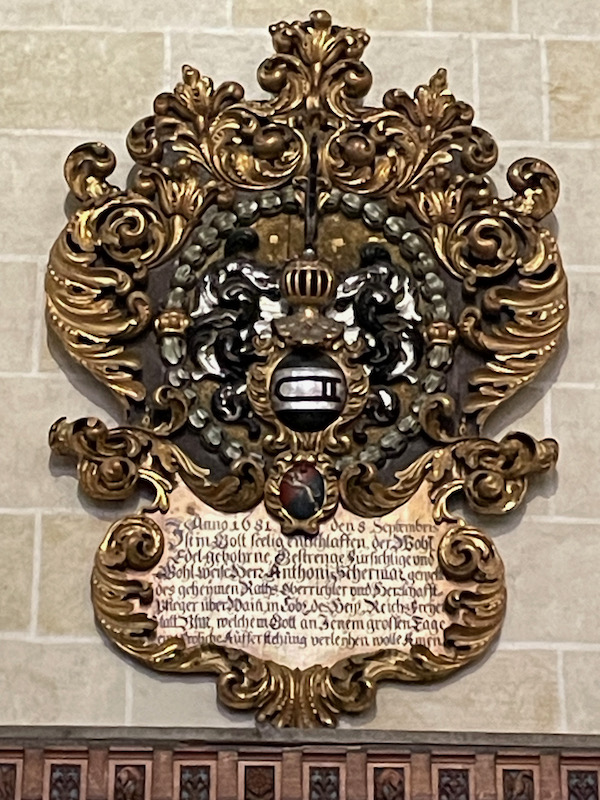
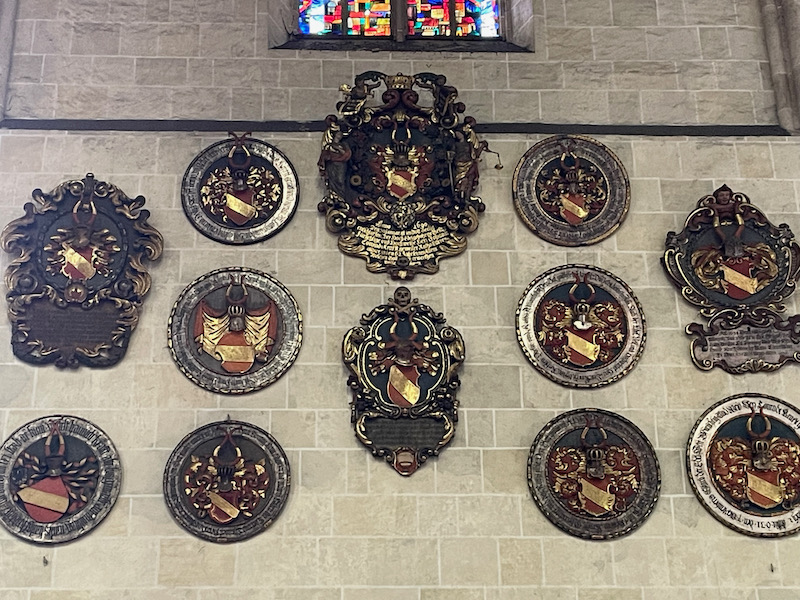
Originally, there were lots of frescoes along the walls. In 1817, most of these frescoes were painted over.
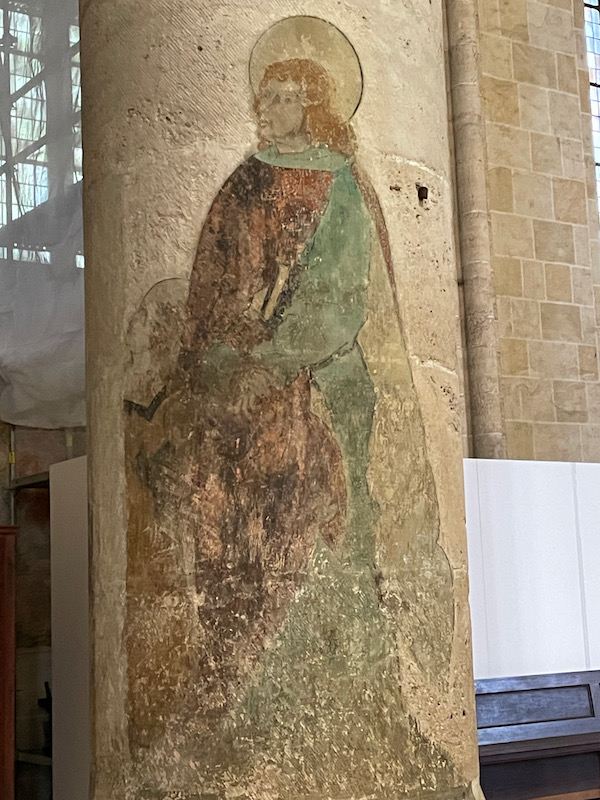
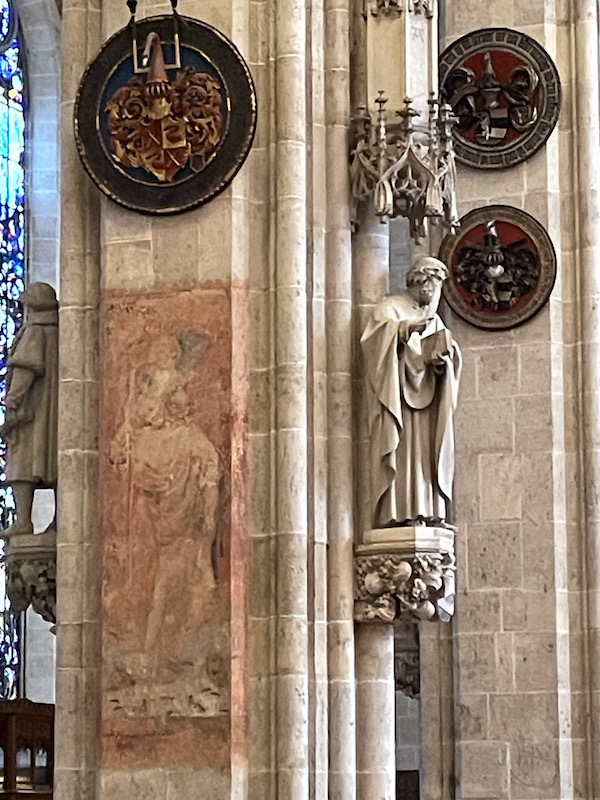
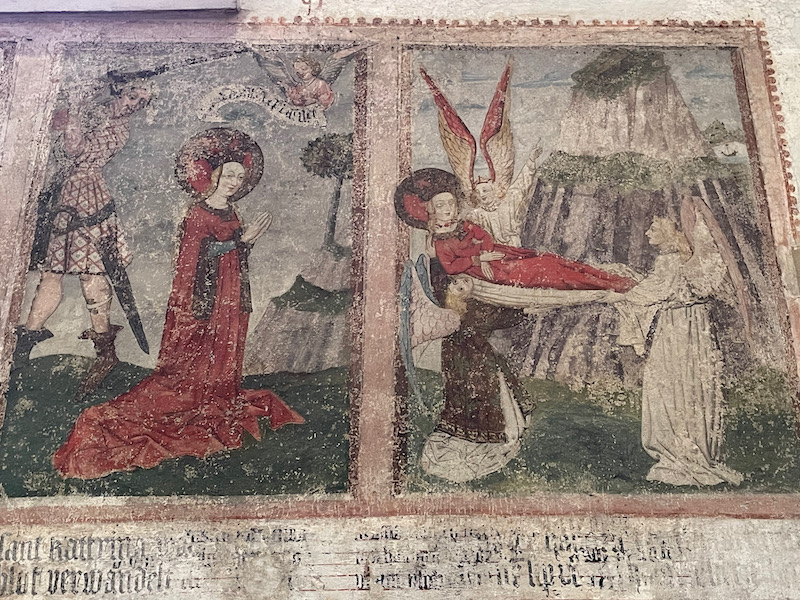
There is a bas-relief with Christ's family tree in the south aisle.
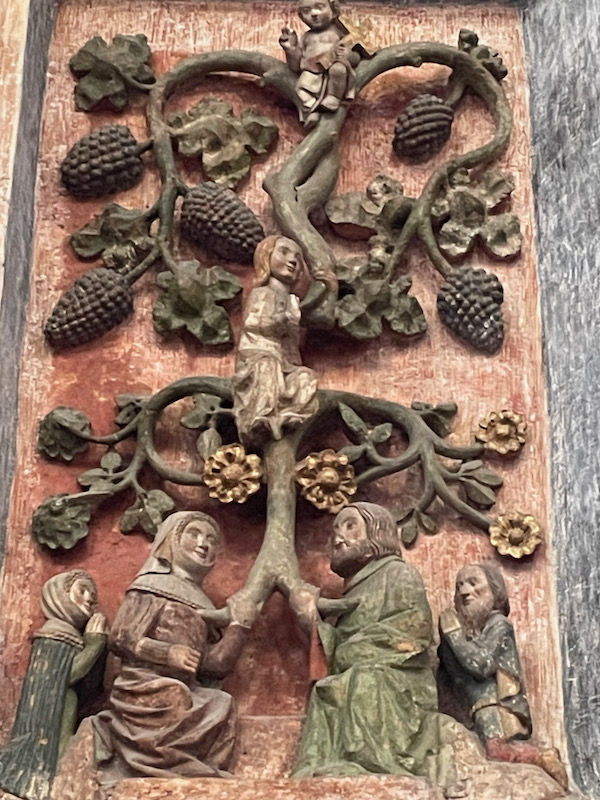
This is the octagonal baptismal font, dating from 1474, under a canopy with 6 prophets and 2 kings.
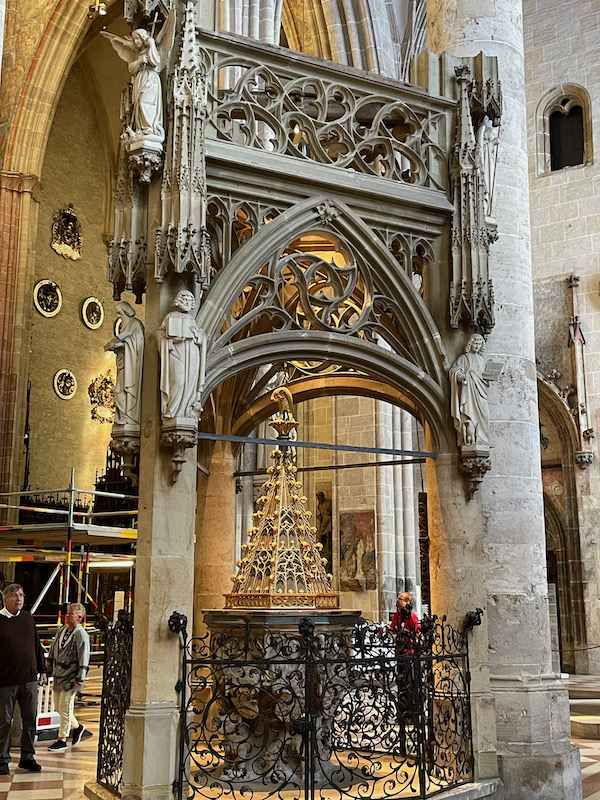
The choir stalls were built between 1469 and 1474 by the carpenter and sculptor Jörg Syrlin the Elder. They are highly sculpted with richly decorated canopies of Gothic style.
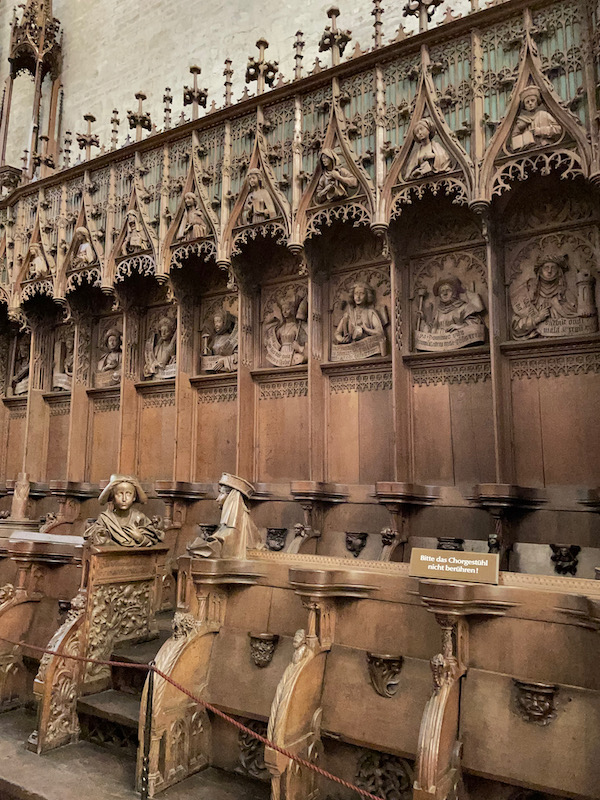
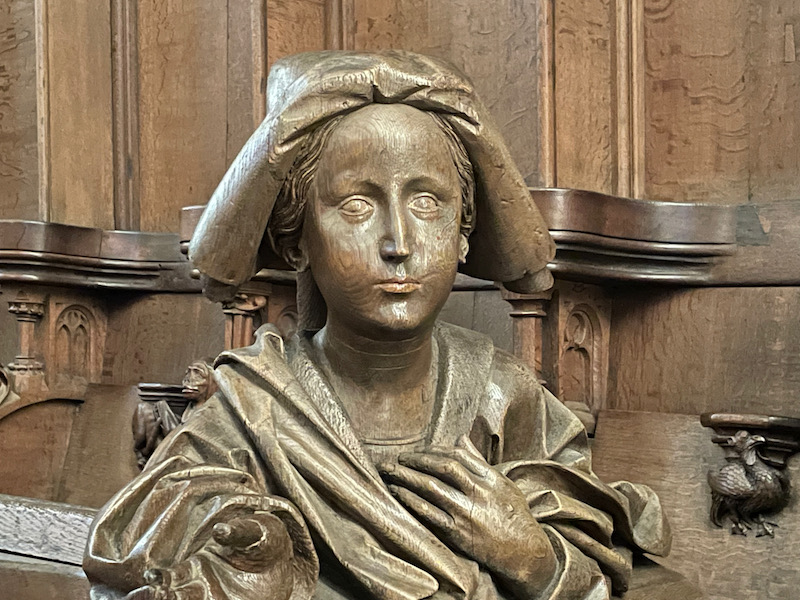
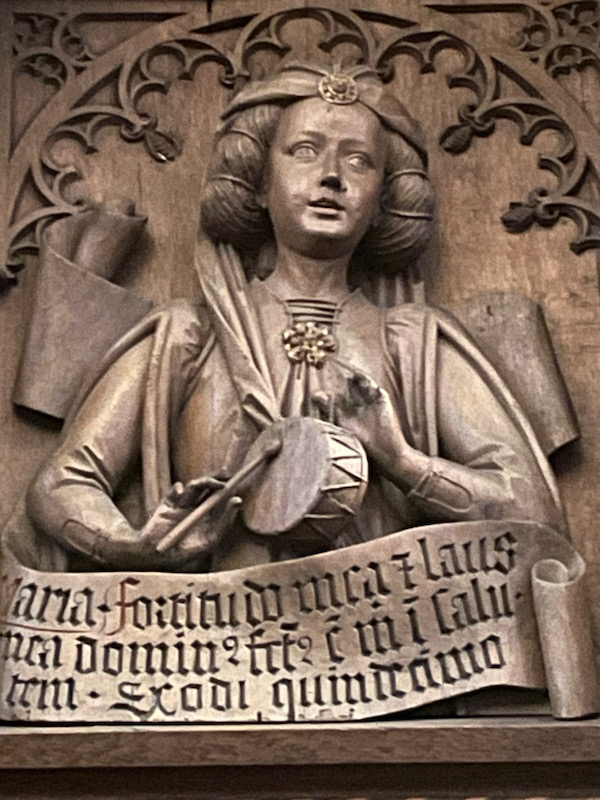
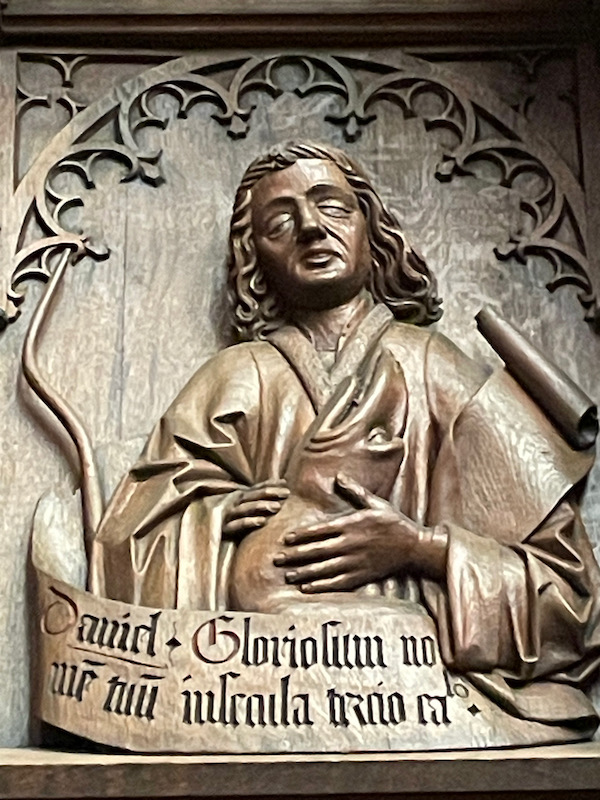
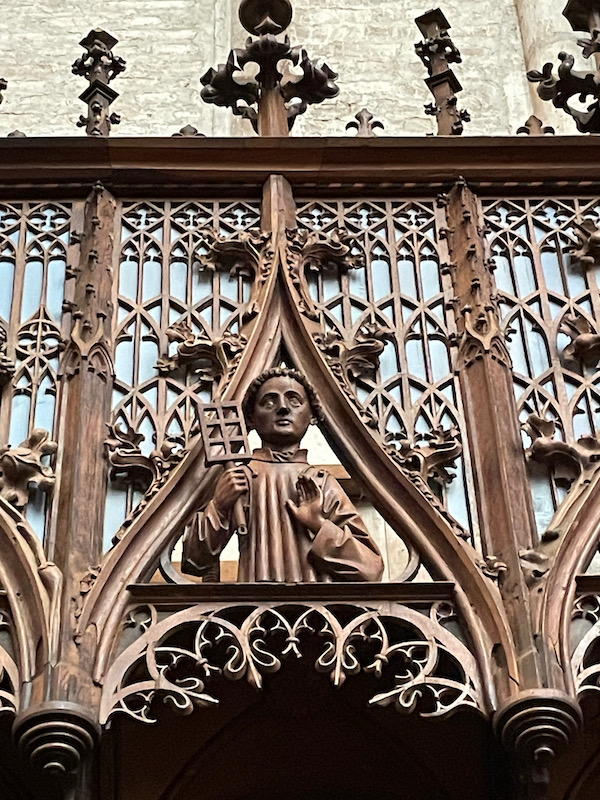
Here we are at the choir and the high altar and lots of stained-glass windows. The middle section of the altar is a shrine with Christ's family, the figures still in the late Gothic style. The two wings are paintings from the Renaissance, which were done around 1521. The windows in the choir date from the 14th and 15th centuries and are over 15 meters tall. Each has a different theme.
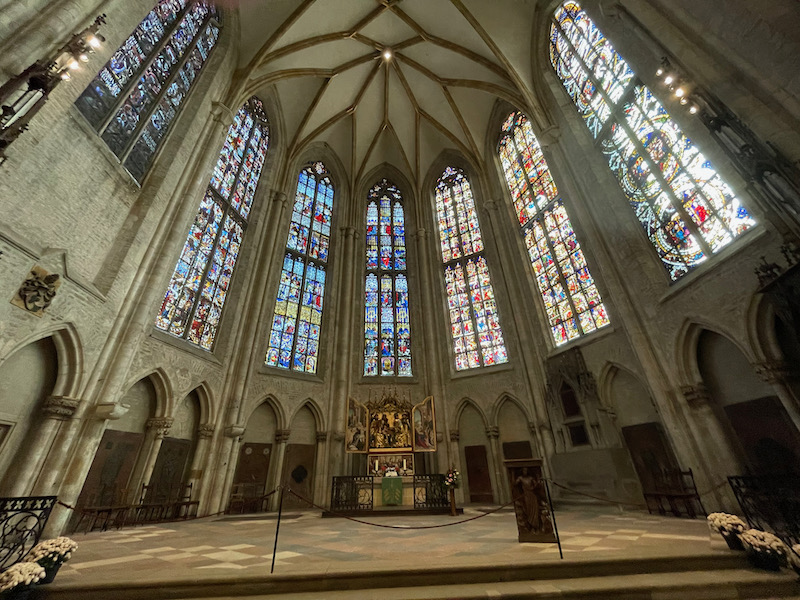
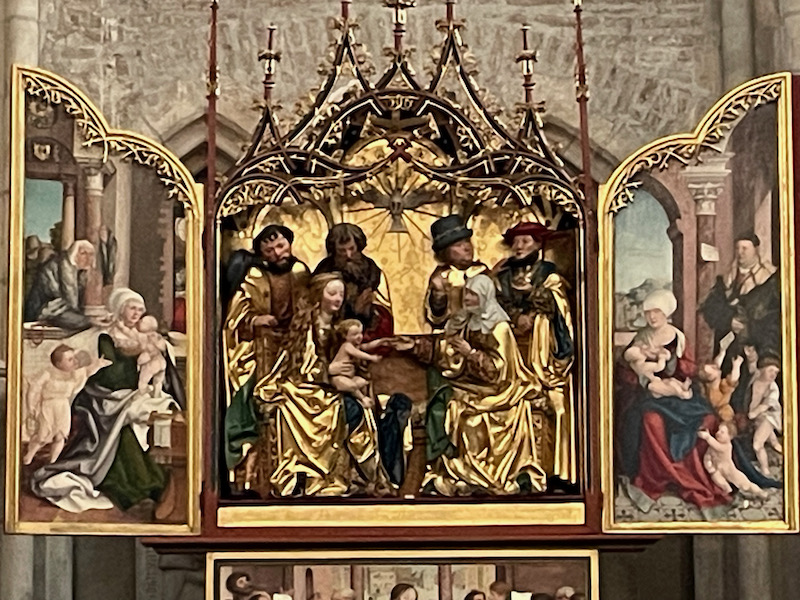
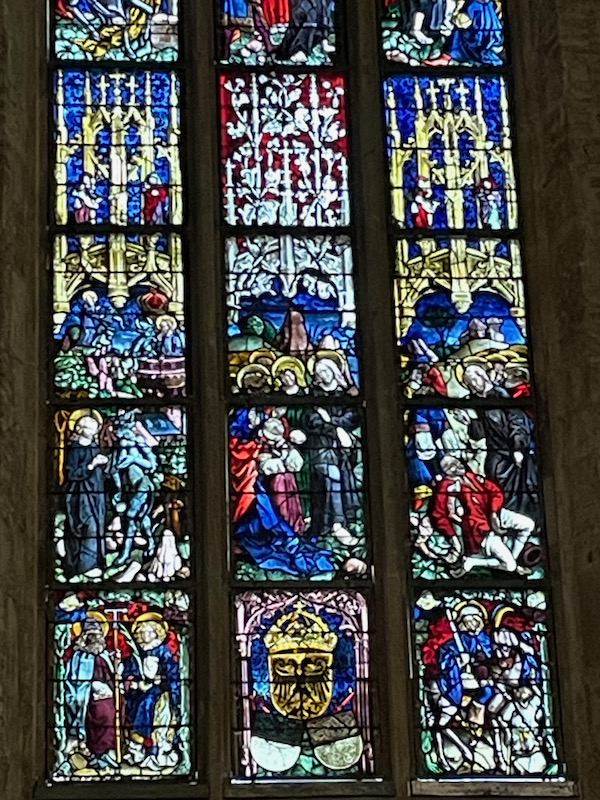
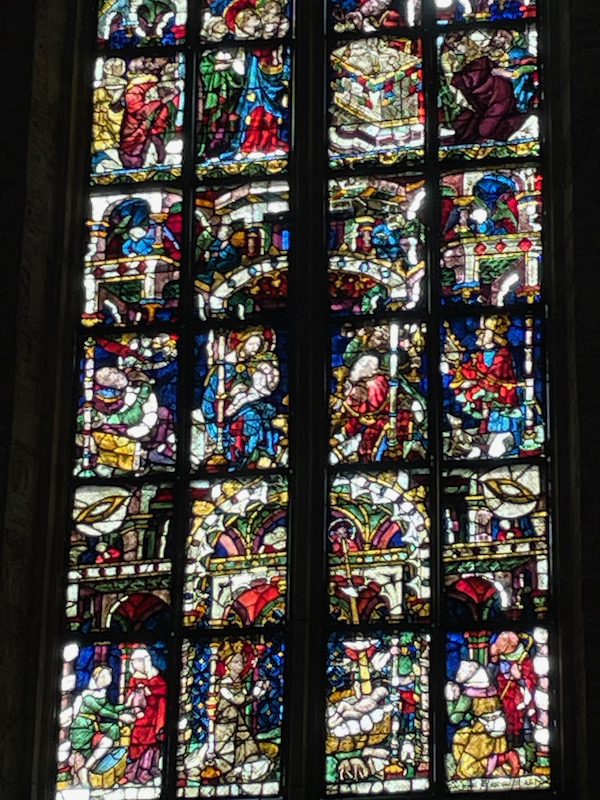
This unusual baroque-looking lion fountain, called the Löwenbrunnen, sits on Münsterplatz in front of the Ulm Münster. On the column, two lions with gold leaf manes stand leaning back to back, one of which holds the imperial eagle in a shield, the other the Ulm city coat of arms. It was built around 1590 and located here since 1992.
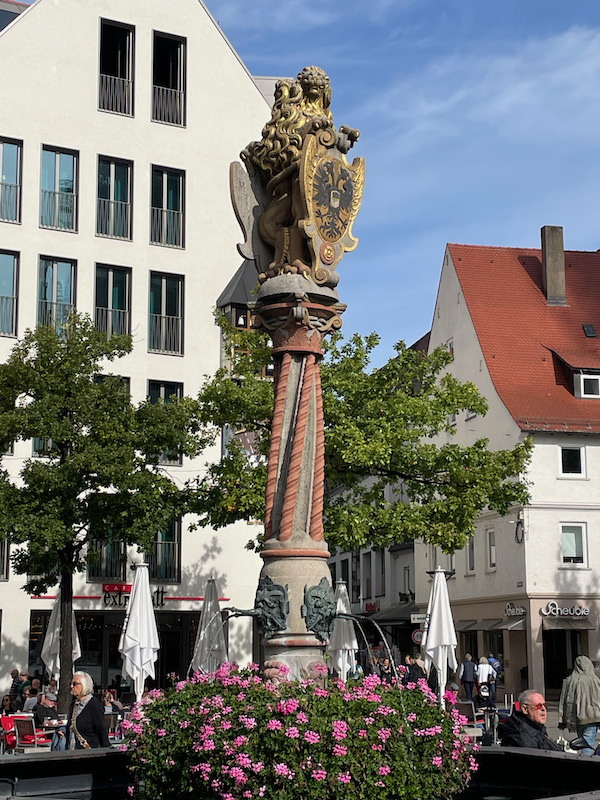
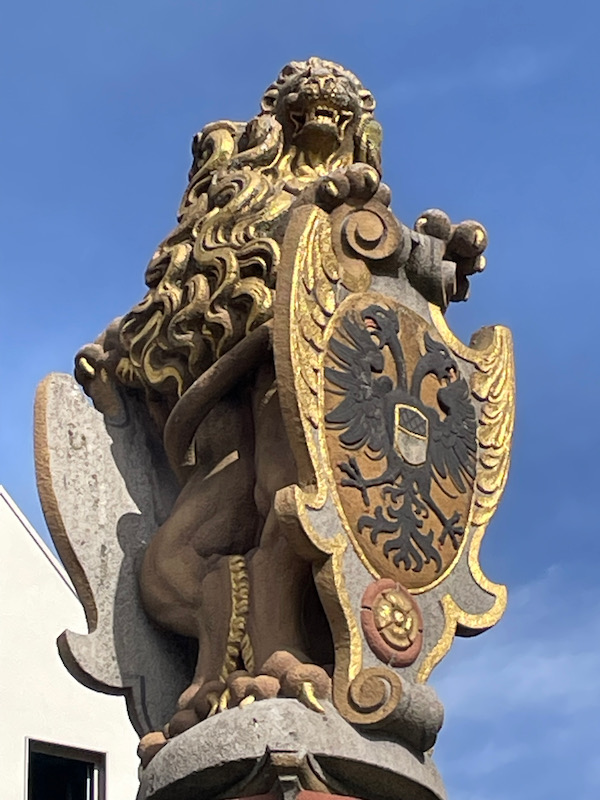
The Schwörhaus, or "Oath House" was built at the beginning of the 17th century and has been destroyed and rebuilt several times. Every year on Swearing Monday , the mayor of Ulm gives a public account from his balcony.
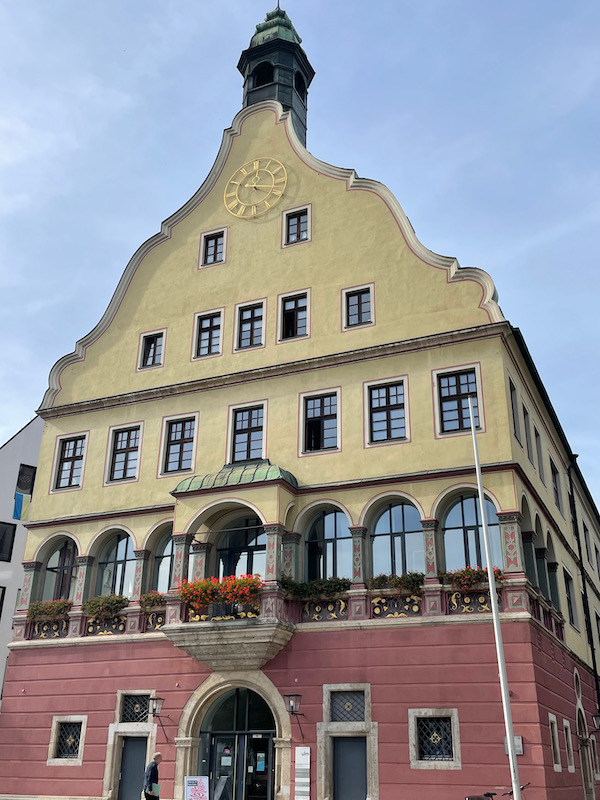
In the square in front of the Schwörhaus is the Christofsbrunnen, or Saint Christopher fountain. This is a 1965-replica of the sculpture of Saint Christoper, created by Jörg Syrlin the Elder created in 1584 which is now in a museum. It has Saint Christopher holding a baby Jesus on his shoulders.
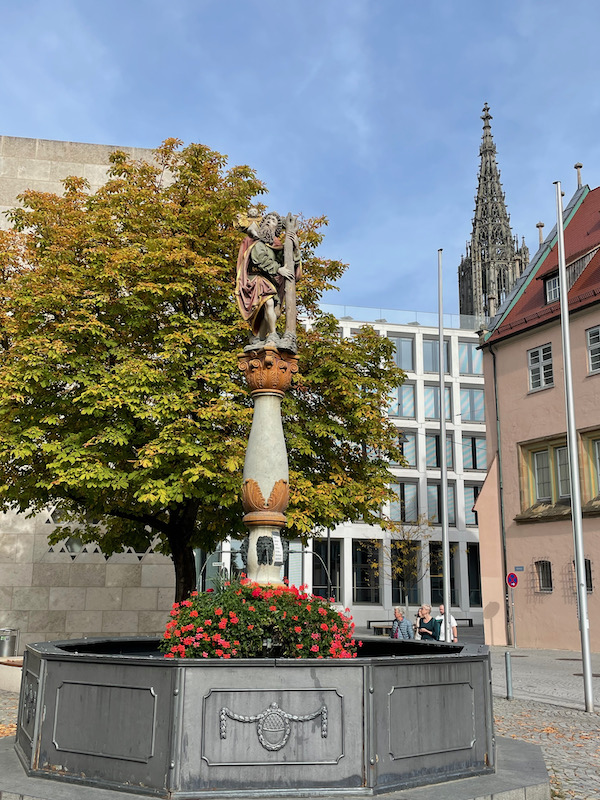
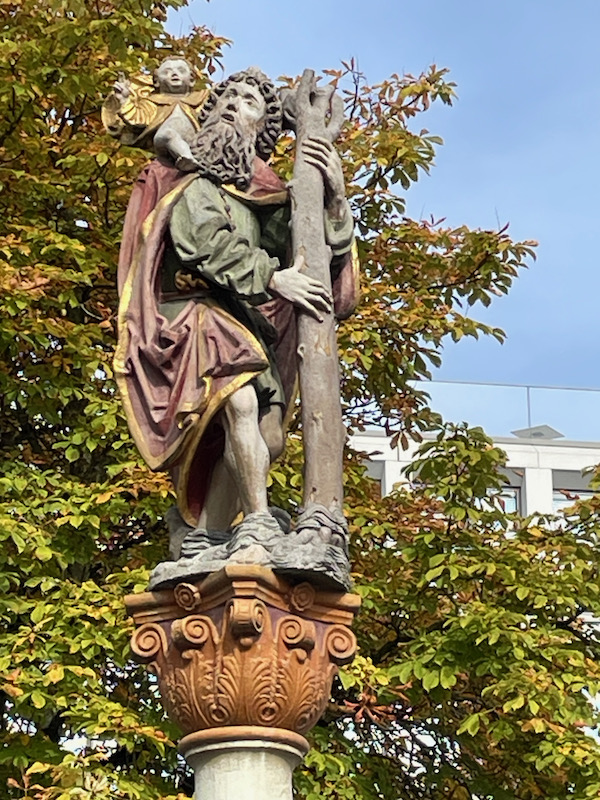
The Staufenmauer is a remnant of the Staufen city fortifications from around 1220.
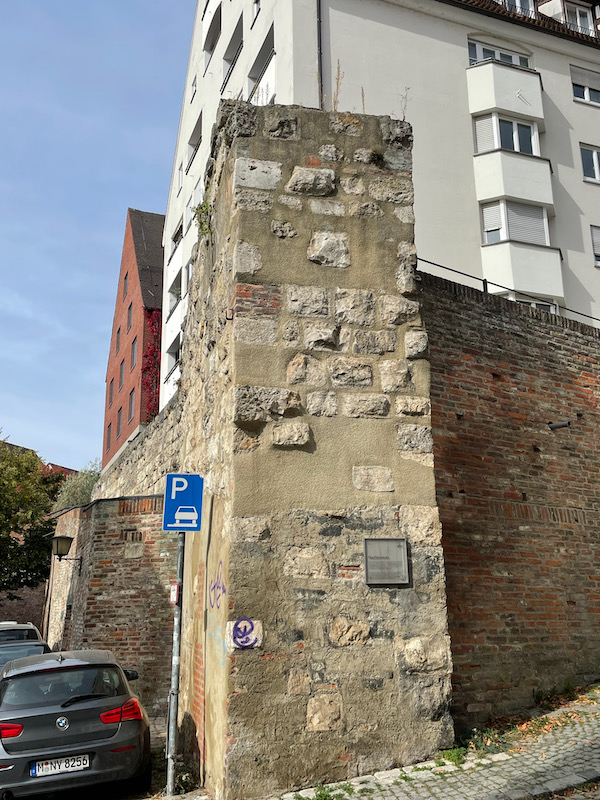
The "Schiefes Haus", or crooked house, is the most frequently photographed former town house in the city and dates all the way back to the year 1406. In 1443, the house was enlarged, but not on firm ground and the foundation slowly gave way, leaving it with an obvious tilt of about 10 degrees. It used to be the "most leaning hotel in the world" in the Guinness Book of World Records until it was overtaken by a hotel in Abu Dhabi.
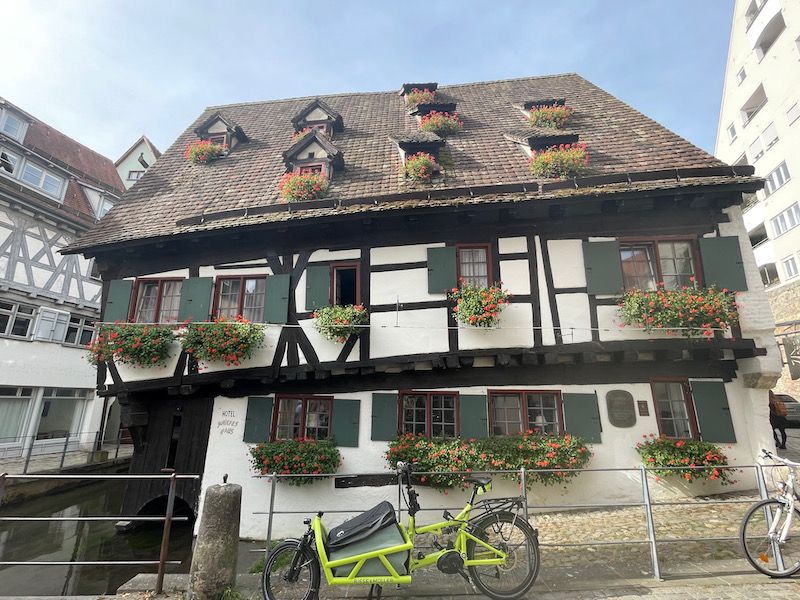
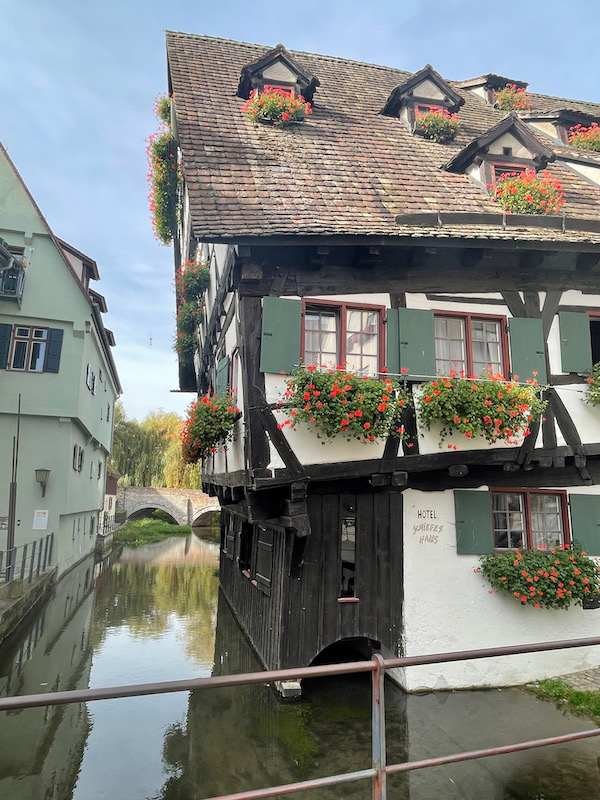
The Fischersviertel historical district has winding streets lead through well-preserved and beautifully restored half-timbered houses. This was the "fisherman's" district, and it is crossed by the small and large Blau canals. It provided the water power for the mills located here and water access to the Danube. With the water canals, tanners and dyers also settled here in the Middle Ages. These needed a lot of water for processing animal skins and dyeing fabrics.
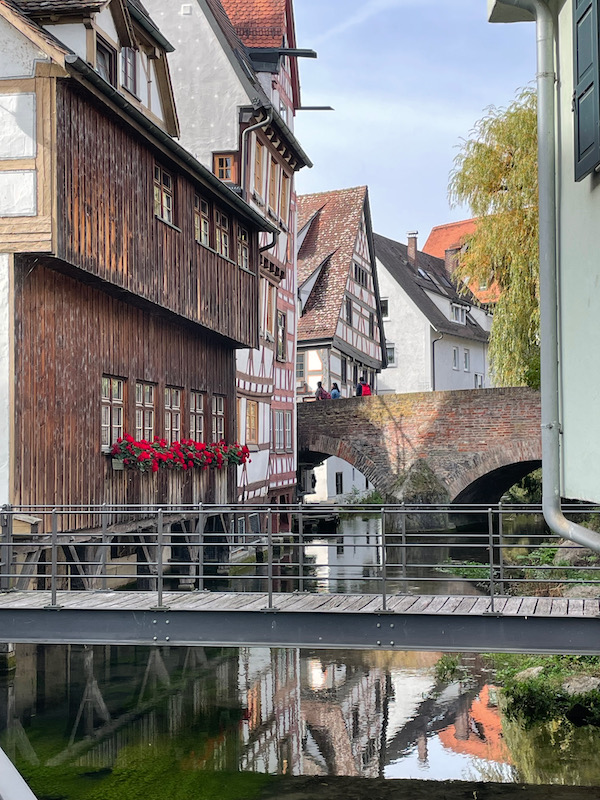
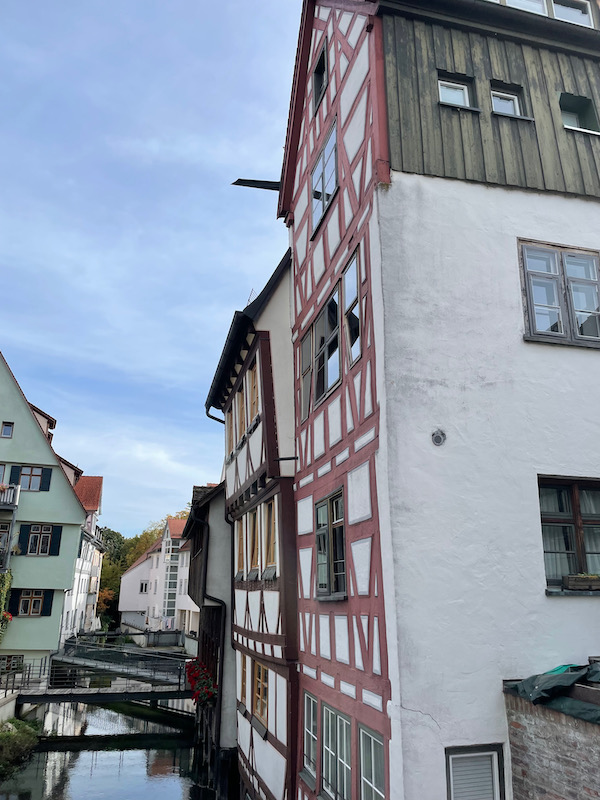
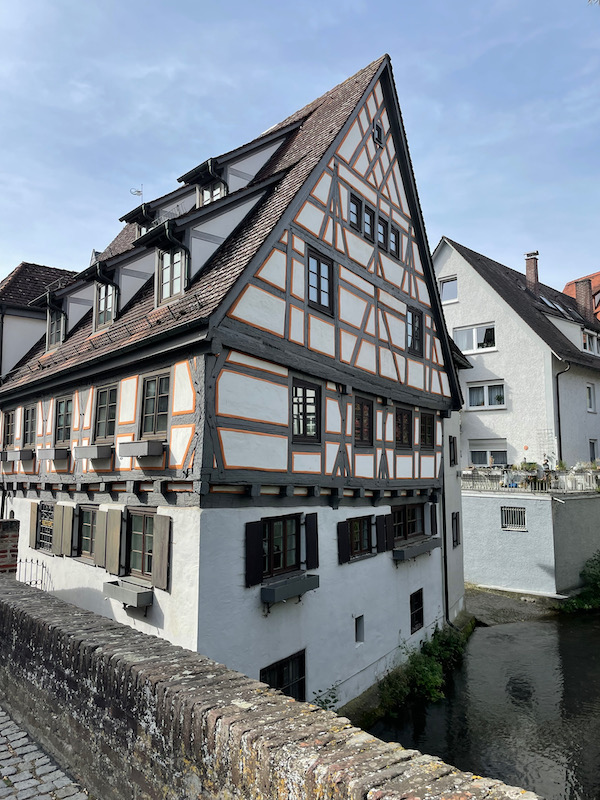
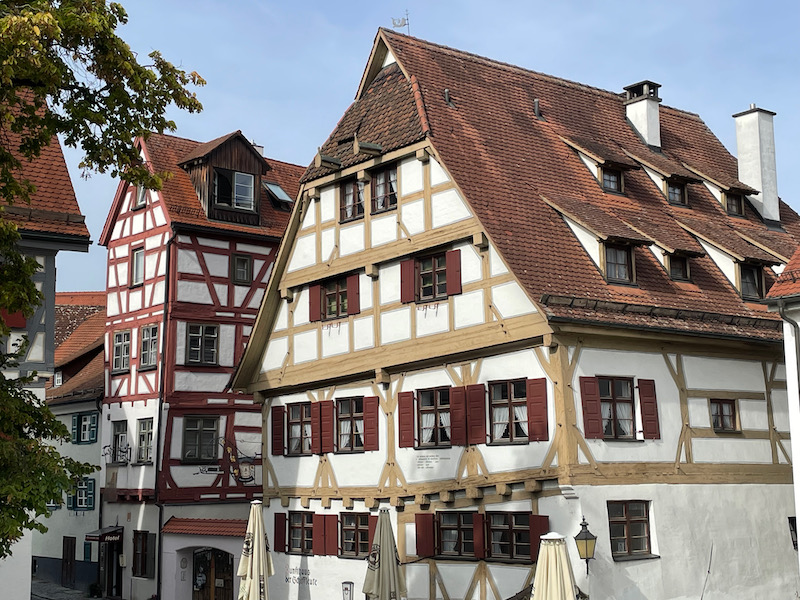
In addition to the Staufen city fortifications, another city wall along the river was built in the 1400s. Most of the fortifications were demolished in 1800, on the order of Napoleon. Only the lower portion of the wall remained for flood protection. The only remaining city gate from the medieval city fortifications along the Danube River is the Metzgerturm. This square brick tower, the "Butchers Tower", was built around 1340 as an outlet from the city to where the city's slaughterhouse was located.
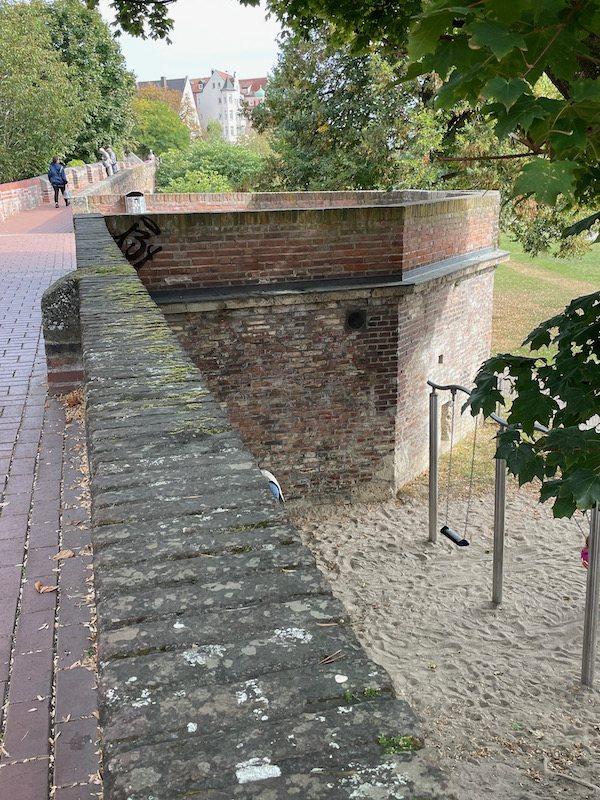
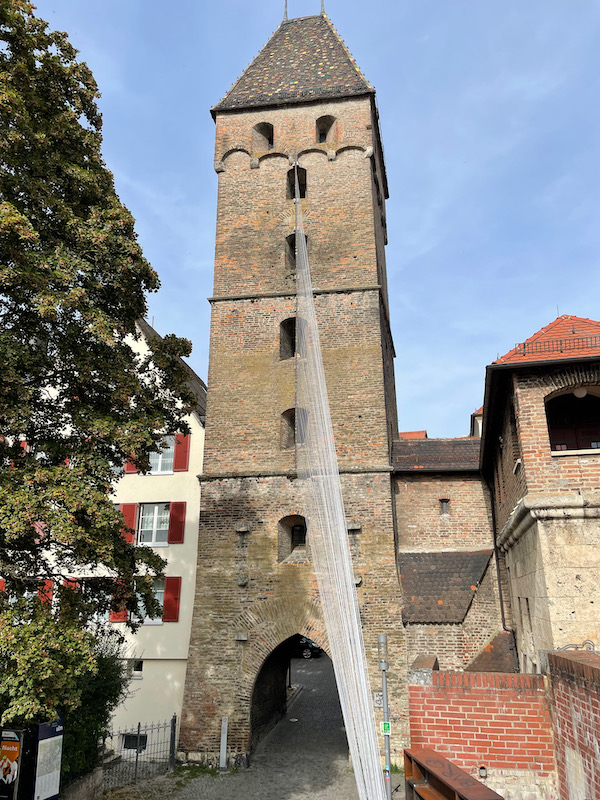
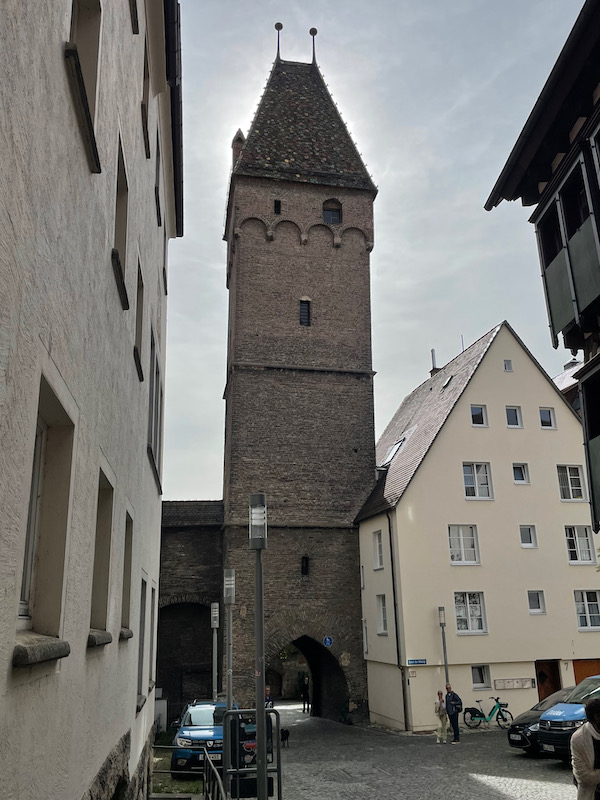
The Rathaus, or town hall is one of the most interesting buildings in town. The history of the building goes back to the 14th century. Ornate paintings, figures, magnificent windows and decorations decorate its façades. The historical wall paintings show biblical motifs from the Old Testament, coats of arms of cities and countries with which Ulm traded, historical battle paintings and historical Danube trading ships.
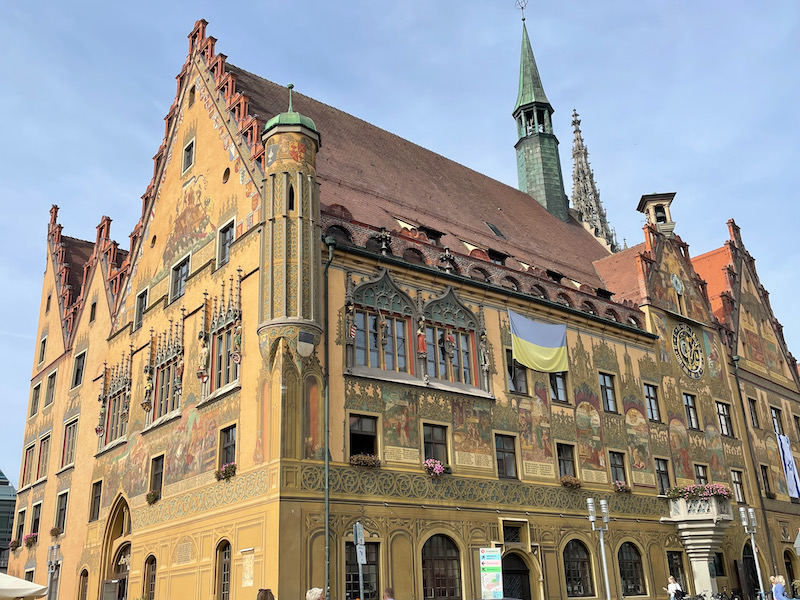
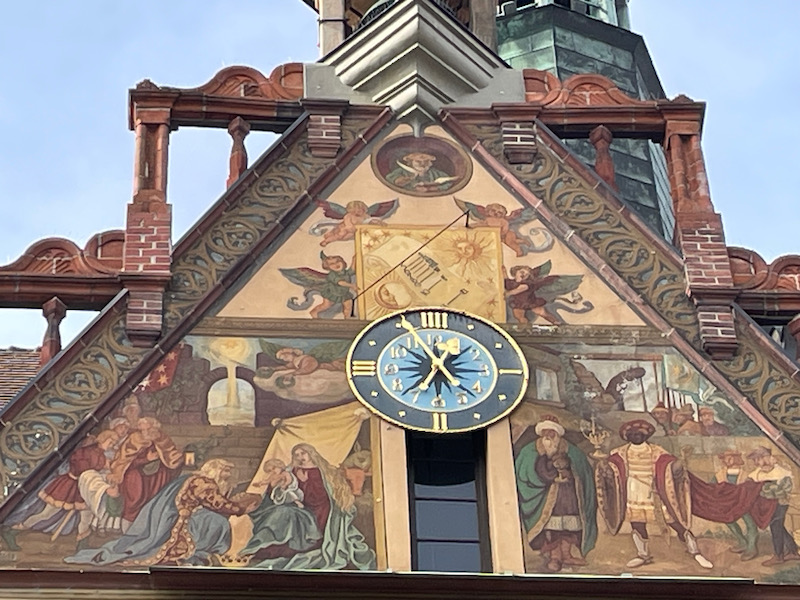
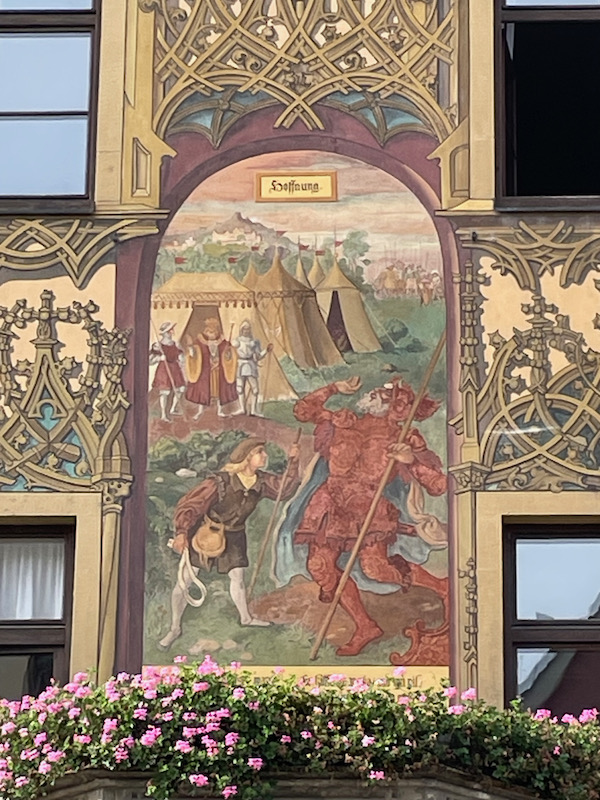
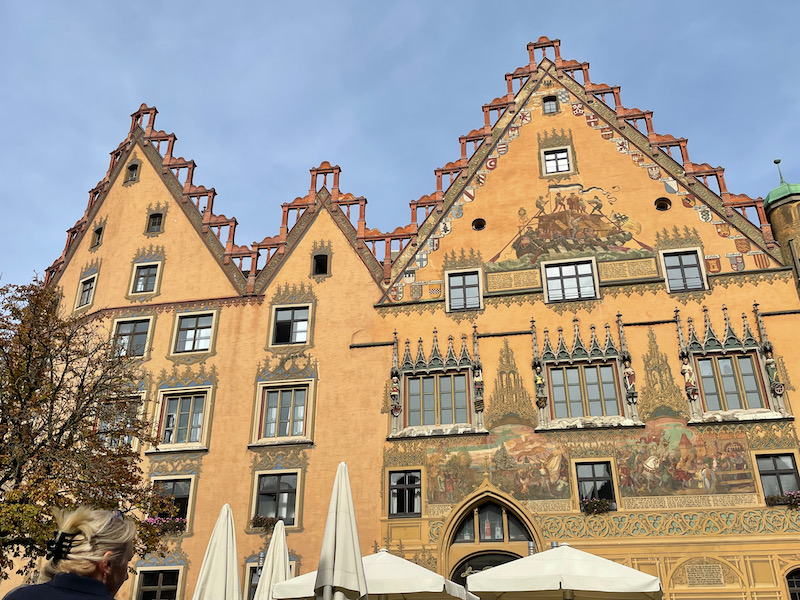
Imperial window on the east side of the town hall with figures by Hans Multscher.
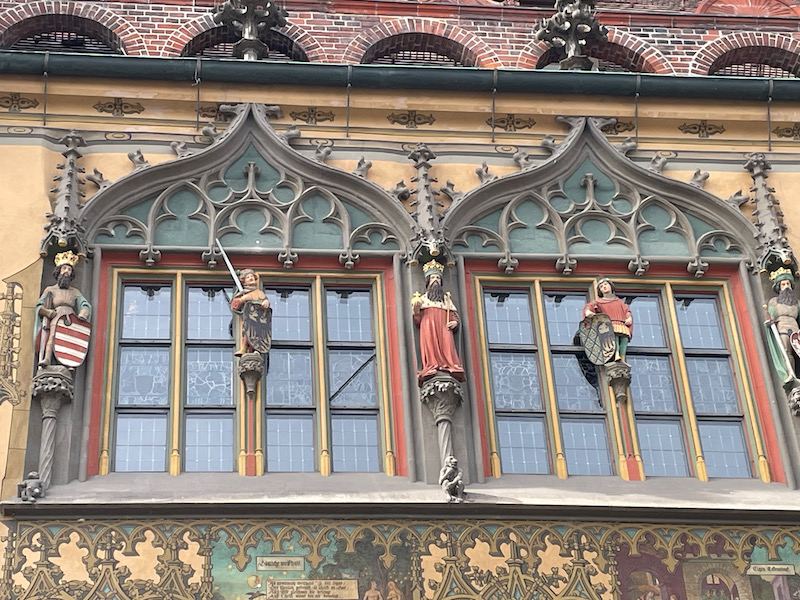
The astronomical clock was probably installed in the eastern front of the town hall around 1520 and overhauled in 1581. In 1944, the clock was destroyed in a heavy air raid with only the dial with the zodiac ring and the hands remaining. A complete renovation took place from 1949 to 1952.
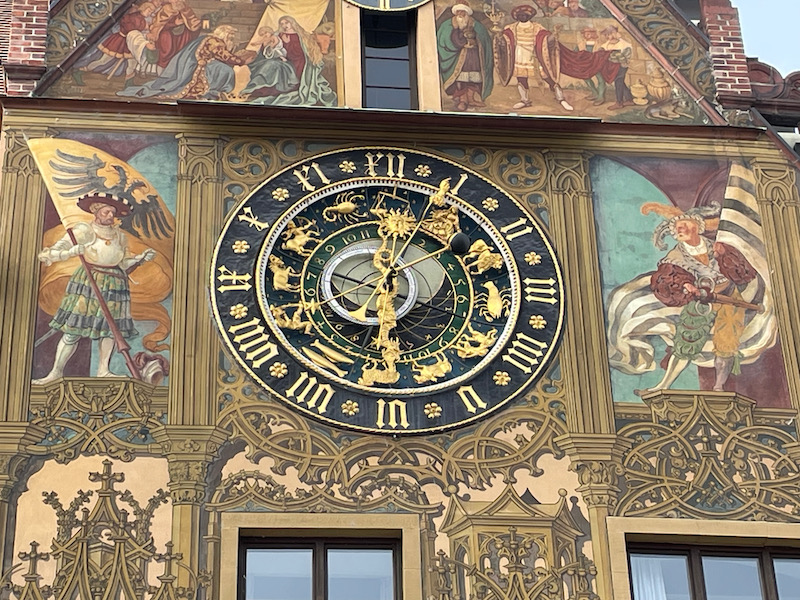
And another fountain, this one called the Fischkastenbrunnen, in the Rathaus square.
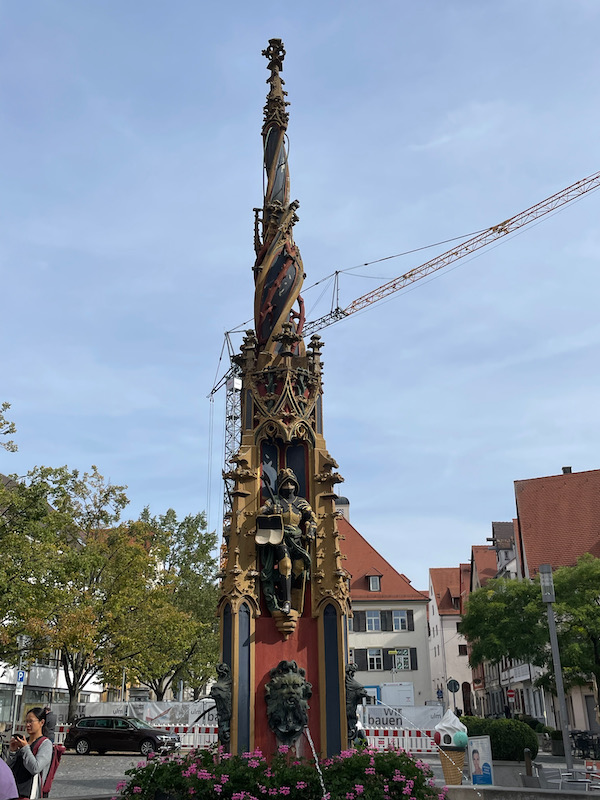
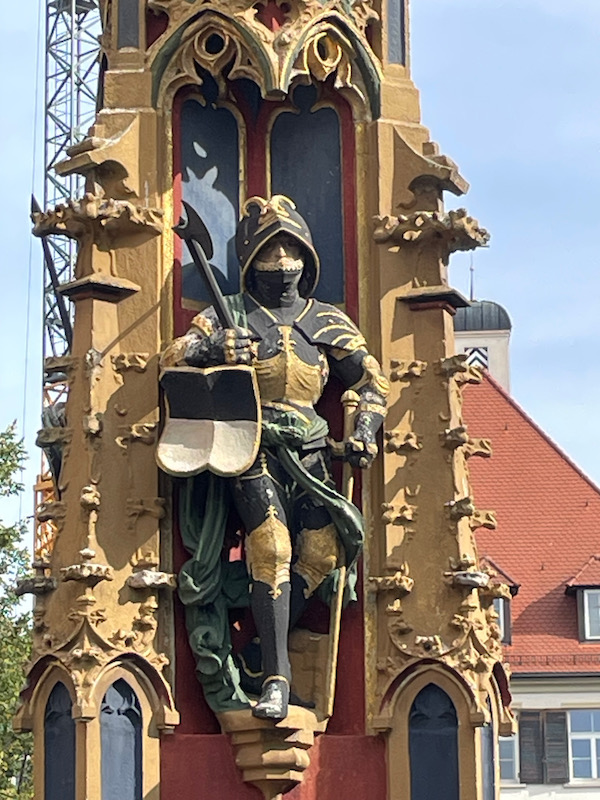
The Ulm sparrow is the symbol of the city, and there are little birds all over the city, like this one in front of a music school (with the treble clef in its mouth).
